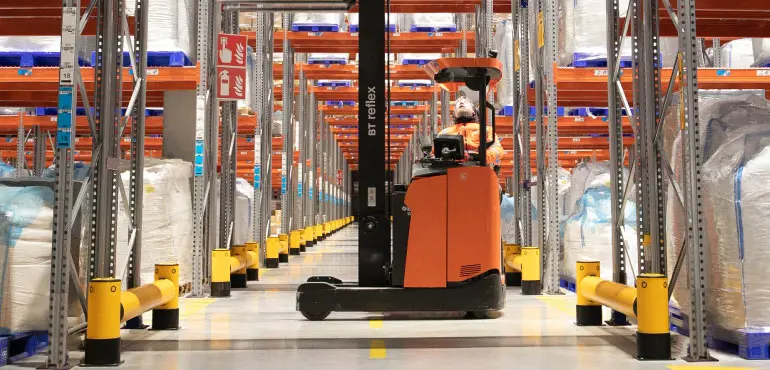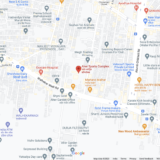
Every day, forklifts and other industrial-powered trucks lift millions of items in warehouses and distribution centres across the world. With facilities getting busier all the time, it’s crucial to make sure that lifting things safely becomes a top priority. Ensuring the safety of lifting operations has never been more important than it is today.
In this blog, we talk a lot about the importance of forklift lifting safety. We’ll show you some easy steps you can follow to make your work environment safer.
The Impact of Forklift Lifting Accidents:
Forklift accidents are extremely serious. They can cause severe injuries, disabilities, and even deaths. These accidents don’t just affect the people involved. They also have a big impact on their families, co-workers, and the whole community.
The financial burden from medical bills, compensation claims, and legal issues adds to the importance of preventing such accidents.
Understanding the Key Challenges of forklift safety:
Accidents can occur during lifting for various reasons such as:
- Forklift operators not being adequately trained
- Not having clear forklift safety rules and health and safety guidance
- Operators exceeding site speed limits
- Overloading forklifts or other powered industrial trucks.
It’s vital to tackle these problems to make work environments safer and more efficient. By finding and fixing potential dangers, we can make lifting operations less risky.
Key Steps for Lifting Safety:
1. Provide appropriate training
It’s crucial to ensure that everyone receives proper training to avoid potential hazards. People involved in lifting should learn how to operate equipment, assess loads, distribute weight, and handle things safely. Regular updates and refresher courses keep workers informed about the newest safety rules and best practices. You can find out more about forklift certification on OSHA website.
2. Promote a Culture of Safety
It’s crucial to create a culture where safety comes first. Encourage open communication and empower workers to report anything unsafe or near accidents. Appreciate and recognise those who put safety first. Conduct regular safety meetings and establish safety committees to ensure the well-being and support of everyone.
Find out more about forklift safety on the Health and Safety Executive Website.
3. Pre-Operational Inspections
Before using lifting equipment, it is essential to follow strict rules. Carefully inspect the machines for any problems, such as damage, malfunctions, or wear and tear. Ensure that all safety features are working correctly and comply with the rules. If you find any problems, be sure to fix them right away to prevent accidents.
4. Assessing and Planning the Load
Planning is essential before lifting anything. Provide guidance to workers on how to check load weight, size and stability. Choose the right lifting equipment for each job and set limits on how much we can lift. Make sure everyone knows what they’re doing and communicates well to avoid risks.
5. Forklift lifting attachments
Forklift lifting attachments play a crucial role in improving forklift lifting safety. These attachments enhance stability, load distribution, and lifting capacity, reducing the risk of accidents caused by imbalanced loads or overloading. They also improve visibility for operators, allowing them to have a clear view of the load and their surroundings. By utilising forklift lifting attachments, organizations can significantly enhance safety during lifting operations, protecting both workers and goods from potential hazards.
6. Using Technology to Stay Safe
We can make lifting safer by using new technology:
- Special sensors to detect if something is too close
- Weight-checking systems can help to ensure safety
- Additionally, there are machines that assist with automatic lifting.
These technologies provide immediate feedback, prevent excessive lifting, and reduce the likelihood of mistakes.
7. Personal Protective Equipment (PPE)
When it comes to forklift lifting safety, wearing the appropriate personal protective equipment (PPE) is essential. It is crucial for operators and workers to always wear the necessary gear to minimise the risk of injuries. This includes:
- wearing a hard hat to protect the head from falling objects
- safety shoes that provide adequate foot protection
- safety goggles to shield the eyes from debris or flying particles.
In addition to PPE, it is important to consider clothing choices when working around forklifts. Loose-fitting clothing can pose a serious hazard as it may get caught in the forklift’s moving parts.
Employers should emphasise the importance of proper attire and enforce these safety measures through training programs and workplace policies.
8. Always Improving
Continuous improvement and increased safety are always the goals. Carry out regular risk assessments and look for ways to improve. Look at reports of accidents and near-miss situations. Regularly engage with employees and listen to ideas from workers and safety experts to make improvements.
In conclusion, creating safer workplaces requires a collective effort to prioritise forklift lifting safety. By implementing the key steps outlined in this blog, organisations can significantly reduce the risks associated with lifting operations.
Adequate training, promoting a culture of safety, conducting pre-operational inspections, assessing and planning loads, utilising forklift lifting attachments, using technology, and ensuring the use of personal protective equipment are all essential components of a comprehensive safety strategy.
Organisations must foster a culture of continuous improvement by regularly assessing risks, analysing accidents and near-misses, and actively seeking input from workers and safety experts.
By consistently striving for improvement and emphasising safety at all levels, we can create workplaces that prioritise the well-being of workers, prevent injuries, and ultimately save lives.
Together, let us make forklift lifting safety a top priority and create safer, more efficient work environments for everyone involved.


